The story of computing stretches back far longer than most realize, with early inventions laying the groundwork for today’s advanced technology. From ancient mechanisms predicting celestial events to massive machines aiding war efforts, the oldest computers in history demonstrate the ingenuity and ambition of their creators. These devices, built for everything from calculations to codebreaking, paved the way for modern computing, revealing surprising insights about early technology and its evolution. This list explores some of the most remarkable early computers, showcasing their unique designs, functions, and enduring legacies.
Harwell Dekatron (WITCH)
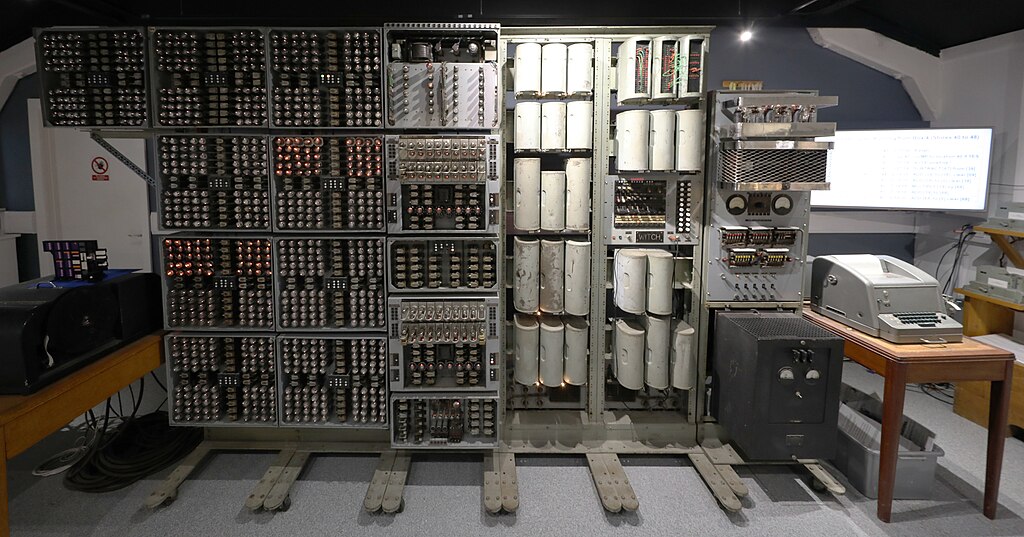
The Harwell Dekatron, built in 1951 in the United Kingdom, is recognized as the world’s oldest still-functional digital computer. Originally used at the Harwell Atomic Energy Research Establishment for scientific research, this machine weighed approximately 2.5 tons and was uniquely reliable. Using almost 800 Dekatron valves and operating in decimal rather than binary, it prioritized dependability over speed, processing data more slowly than binary-based computers of the time. It was later transferred to Wolverhampton Technical College for educational use, where it gained its WITCH name. Restored in 2012, it is now showcased at the National Museum of Computing, where it still runs. Its robust construction and unique features reflect early British computing innovations.
Ferranti Mark 1

The Ferranti Mark 1, introduced in 1951, was the first commercially available general-purpose computer and was developed in England by Ferranti Ltd. Designed from the Manchester Mark I, it was among the earliest computers aimed at scientific and commercial applications rather than wartime use. It featured eight memory tubes, each capable of storing 64 words, along with a magnetic drum for secondary storage that allowed for rapid data retrieval. It could perform complex calculations quickly, completing multiplication tasks within milliseconds. It paved the way for commercial computing applications, influencing future developments in computing.
UNIVAC I
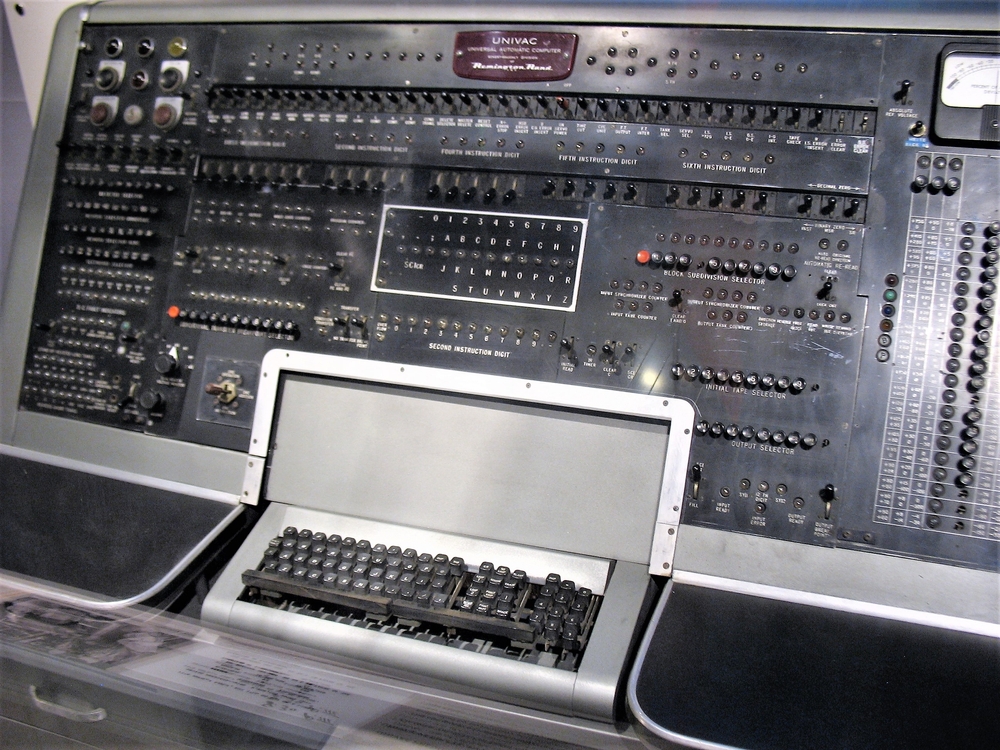
Launched in 1951 in the United States, the UNIVAC I (Universal Automatic Computer) was the first computer intended for commercial use. Created by J. Presper Eckert and John Mauchly, it processed data at high speeds and was famously used by CBS in 1952 to predict the U.S. presidential election results. Its capabilities transformed it into a valuable tool for the U.S. Census Bureau and various businesses, making it an iconic computer in history. It remained influential in shaping future business applications for computers and sparked interest in computer-aided forecasting and data management.
Manchester Mark I
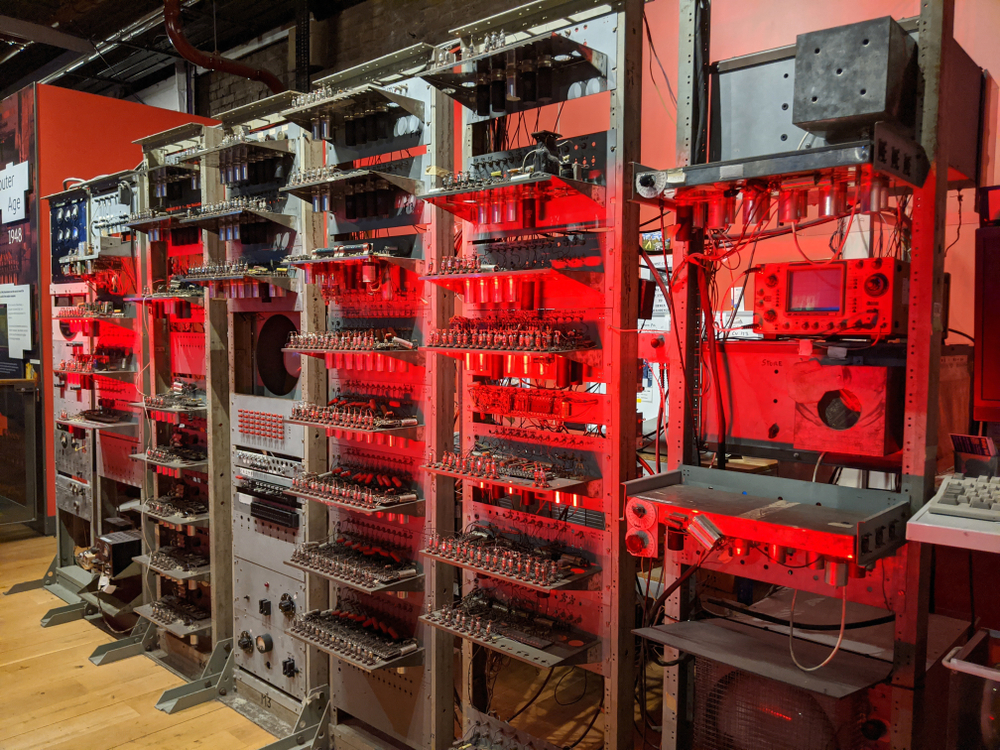
Completed in 1949 at the University of Manchester, the Manchester Mark I was among the first computers to use stored-program architecture. Developed by Frederic C. Williams and Tom Kilburn, it featured the pioneering Williams tube, an early form of RAM that enabled fast data storage and retrieval. Although operational for only a short time, it provided the foundation for future computers and even inspired IBM’s early developments. It introduced indexing registers, which allowed efficient memory access, making it a pivotal innovation in computer architecture. Its design highlighted the potential for digital storage and computation, and it influenced later commercial computers.
ENIAC
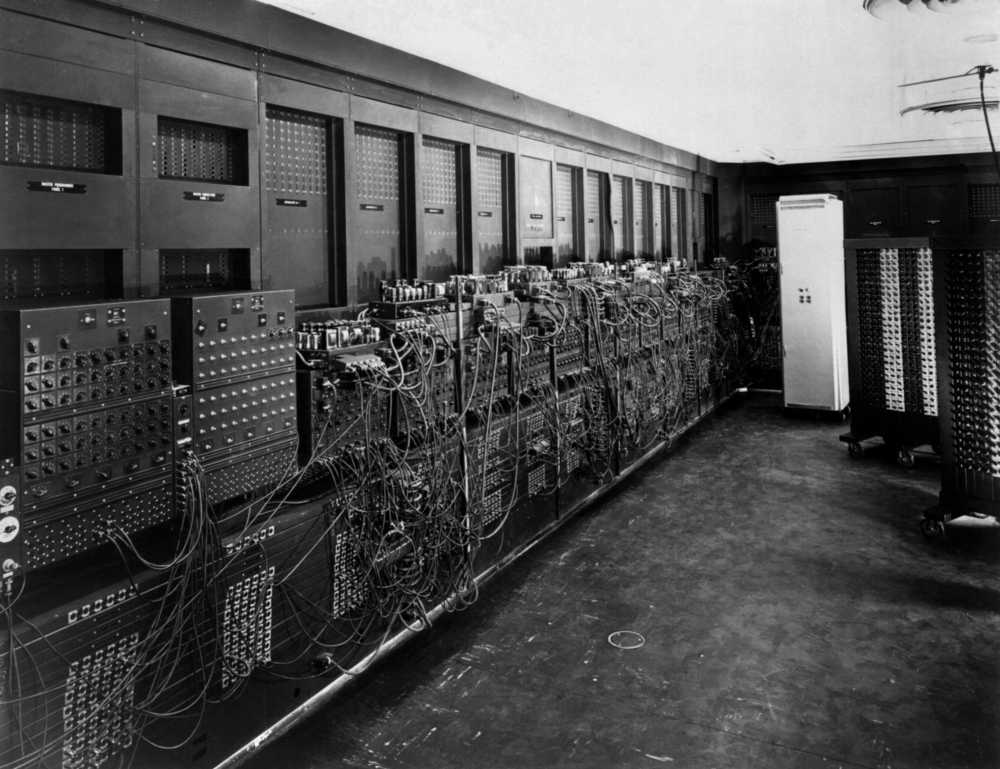
The Electronic Numerical Integrator and Computer (ENIAC), completed in 1946 in the United States, was one of the first electronic general-purpose computers. Built by John W. Mauchly and J. Presper Eckert, ENIAC spanned 100 feet in width, making it a towering presence in computer history. Weighing over 30 tons, it consisted of nearly 18,000 vacuum tubes and occupied an entire room. Originally designed for military purposes, it could perform thousands of calculations per second and was pivotal in the development of ballistic calculations during WWII. Unlike its predecessors, it could reprogram itself to handle different tasks, which set a precedent for modern computers. Its speed and versatility revolutionized computing, though it was energy-intensive and emitted substantial heat. By 1955, its usefulness was waning, but it remains an iconic symbol of the transition from mechanical to electronic computing.
Colossus Mark I

Developed during World War II at Bletchley Park in England, the Colossus Mark I was instrumental in decrypting German communications. Built in 1943 by engineer Tommy Flowers, it utilized over 2,000 vacuum tubes to speed up calculations and help break encrypted messages, a breakthrough that significantly aided the Allied war effort. It was one of the earliest programmable computers, relying on punched tape to feed encrypted messages into the system. Its success in decryption saved countless lives by hastening the end of the war. It operated at an impressive speed for its time, reading 5,000 characters per second. Its contributions to computing and cryptography were classified until the 1970s, when its role was publicly acknowledged, marking it as a foundational piece in the history of cybersecurity.
Harvard Mark I
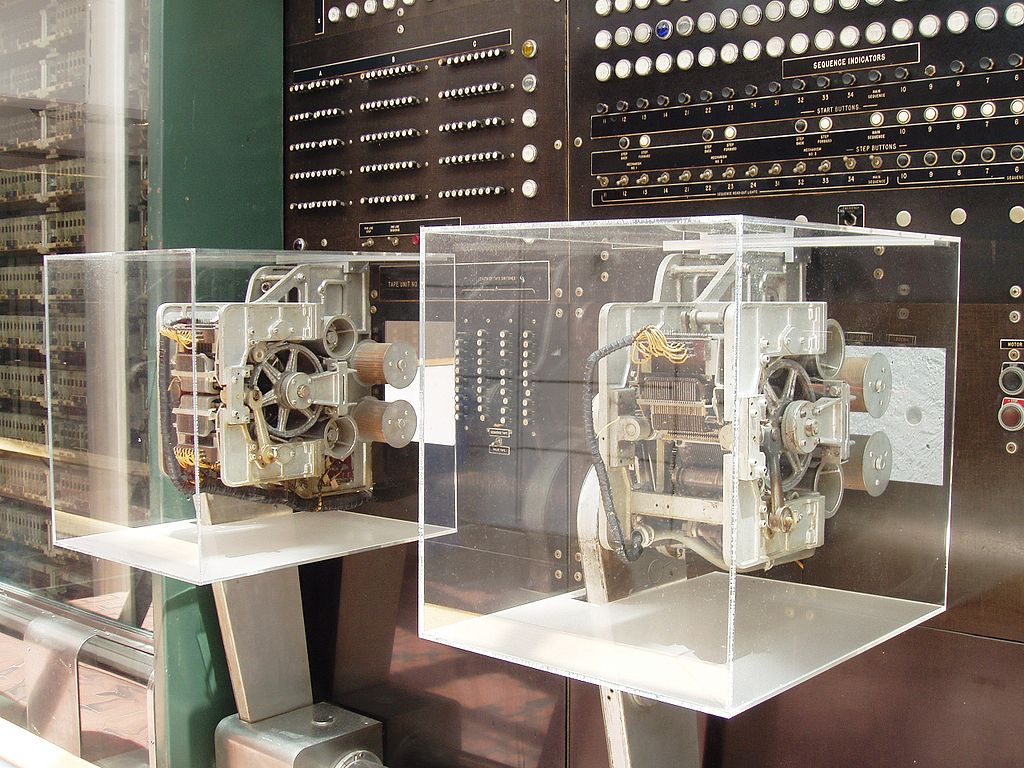
/ Wikimedia Commons
The Harvard Mark I, completed in 1944 and designed by IBM’s Howard Aiken, was one of the earliest electromechanical computers. This 51-foot machine was built to handle complex calculations, especially for wartime logistics. Its design combined mechanical and electrical components to automate arithmetic, though its calculations were slower than later models. Its complex system of switches and relays allowed it to perform operations like trigonometry and logarithmic functions, which were crucial for various military applications, including bomb design. Despite its size and weight, it provided unprecedented computing power for its era. It was used extensively by the U.S. Navy and became a pivotal part of the Allied technological arsenal during WWII. It continued to be used until 1959 and left a lasting impact on computing education and research.
Atanasoff-Berry Computer (ABC)
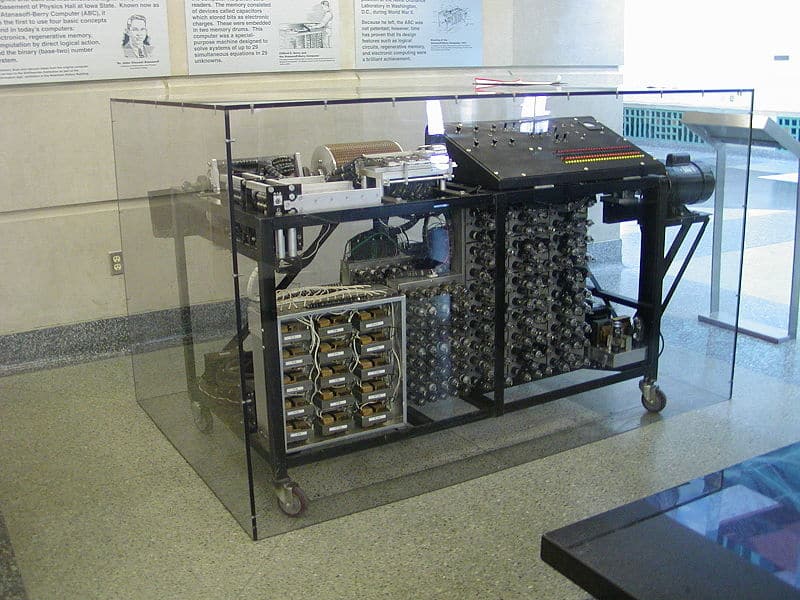
Developed between 1937 and 1942, the Atanasoff-Berry Computer (ABC) was one of the first electronic digital computers, designed by John Atanasoff and his student Clifford Berry at Iowa State University. It was the first machine to implement binary arithmetic, and its design included capacitors to store data, which became foundational concepts in digital computing. Unlike its contemporaries, it was built specifically to solve linear algebra problems, aiding physicists in complex calculations. The machine took up 1,800 square feet and, though never fully operational due to funding issues, provided a conceptual basis for future developments. Its unique design laid the groundwork for the next generation of computing technology and sparked a legal battle over patent rights that influenced the direction of the U.S. computer industry.
Zuse Z3

Built by German engineer Konrad Zuse in 1941, the Zuse Z3 was the first programmable digital computer. It used a binary system and floating-point arithmetic, which made it capable of more sophisticated calculations than earlier mechanical devices. Its design featured nearly 2,600 relays and was operated by punched tape, which allowed for limited programmability. However, the original one was destroyed during WWII, though it was later reconstructed in the 1960s. Its work influenced early computing and marked Germany’s significant but often overlooked contributions to computing technology.
Antikythera Mechanism
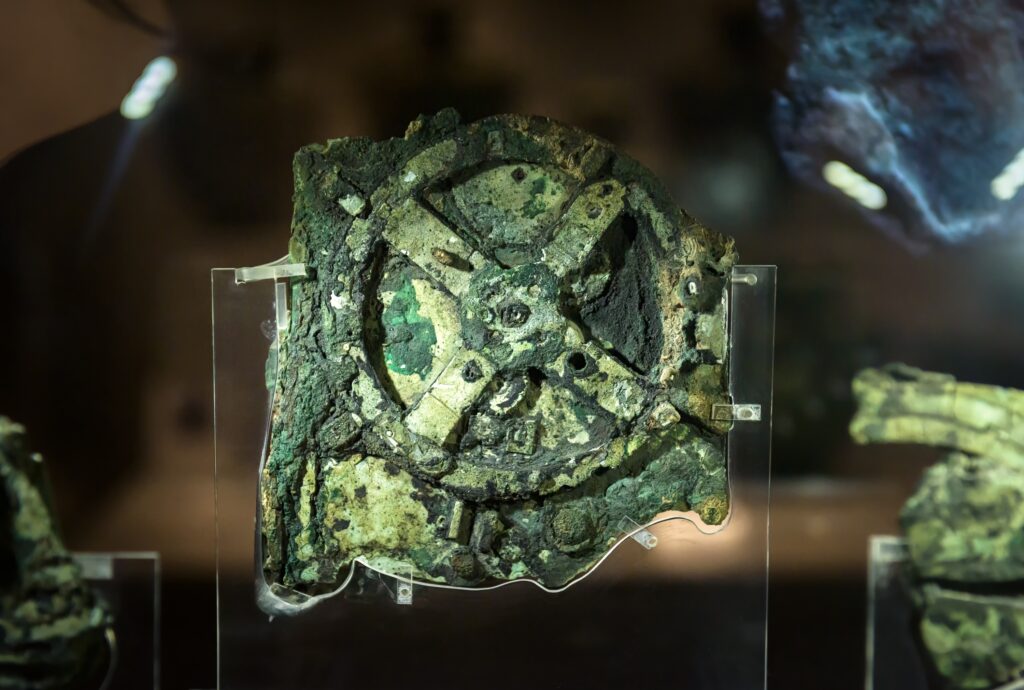
The Antikythera Mechanism, discovered in 1901 from a shipwreck near the Greek island of Antikythera, is often recognized as the world’s oldest computer, dating back to around 87 BC. This complex Greek device, constructed from bronze gears, was likely crafted to model astronomical cycles, displaying the movements of the Sun, Moon, and planets. Enclosed within a wooden case about the size of a mantel clock, the mechanism could predict eclipses and even calculate lunar phases, using a series of intricate gears to mirror celestial movements. It featured two dials, one for the zodiac and one for the lunar calendar, with a rotating knob that allowed users to fast-forward or reverse time. The inscriptions on the mechanism’s inner gears indicate its origins in Corinth or Rhodes, hinting that it may have been a product of Hellenistic science. Scholars are still uncovering details of its functions through advanced imaging technology. Intriguingly, it demonstrated a level of mechanical sophistication not seen again in history until the 14th century.
This article originally appeared on Rarest.org.
More from Rarest.org
20 Exotic Birds in Danger of Disappearing from Our World

Exotic birds are among the most vibrant and unique species on our planet. However, many of these stunning creatures are at risk of vanishing forever. Habitat destruction, climate change, and illegal poaching have contributed to their dwindling populations. Read More.
15 Rare and Exotic Amphibians Thriving in Remote Jungles

Deep within the world’s most remote jungles, a diverse range of rare and exotic amphibians thrive, often hidden from human view. These remarkable creatures have evolved unique traits to survive in their specific environments, from vibrant colors that ward off predators to extraordinary abilities like gliding or regenerating limbs. Read More.
21 Strange Geological Formations Found in Uninhabited Lands

The Earth hides some of its most extraordinary formations in uninhabited regions. These remote landscapes are home to geological wonders that seem almost otherworldly. Read More.
